 |
Flora and Fauna on the Australian Continent

Those who are on holiday in Australia will enjoy the unique landscapes and partly the untouched nature. In Australia, there is a fascinating flora in different climate zones. Moreover, there are animals that do not exist anywhere else than in Australia. Thus, we will have a deep look at the flora and the fauna of the Australian continent.
The Flora of Australia
Since more than 200 million years, Australia is split from the rest of the world by oceans. Due to this reason, a large diversity of kinds could be originated in the flora and the fauna. The fifth continent has a very specific vegetation and has approximately 22.000 kinds of plants. From these kinds of plants, 90% do not appear anywhere else.
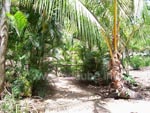
Specially eucalyptus- and acacia-trees belong to the Australian vegetation, there are approximately more than 600 kinds of those. Specially the sophisticated eucalyptus tree appears in the most different areas, also in the hot and dry centre of Australia. They grow to a height up to 90 metres. There are three big vegetation areas of the Australian flora that are arranged as follows:
Tropical Zone
The tropical zone is located alongside the northern coast up to approximately amidst the east coast. It appears in the area of the monsoon climate and is strongly afforested, mainly with deciduous trees; Rainforests appear at the north-eastern coast of Queensland including the Cape York Peninsula. Clamberers and ferns and palms grow between ash trees, oak trees, cedars, pawpaws as also birch trees.
Alongside the low northern coastal line, the wonderful mangrove forests expand at the standing waters as also the emarginations. In the heartland, where there are almost savannah landscapes with low vigorous trees, most of the times, also the sclerophyllous evergreen trees belong to it, that are typical for the local flora.
Temperate Zone

The temperate zone runs over the south-eastern coastal plain and Tasmania and expands over the east coast in northern direction up to the tropical zone. The temperate zone is marked by many bush-and forest landscapes made of sclerophyllous evergreen woods, plants of the temperate climate as also savannah forests.
What is typical for the temperate climate are the mallee-scrubs, bush vegetation, bush-shaped heather and rainforest with plant growth. In the Australian alps and mountain landscapes of Tasmania, there is mainly alpine vegetation. There are pines alongside the east coast up to Tasmania. The pines rank second due to their economical significance, the many eucalyptus kinds are at first place.
The huon pines are excluded from deforestation because they belong to the kinds that became rare. The eucalyptus kinds mostly dominate in the afforested areas of the warm and well irrigted south-eastern and south-western areas. Tasmania is known for its beech forests in the south and the floristic familiarity to New Zealand.
Dry Zone

The dry zone expands over the whole medium arid area and the west of the fifth continent. Here, the vegetation adapted to the arid climate, opponent to the eucalytus trees, here, the acacias prevail. (in total, also 500 kinds). For the plant cover in the west of Australia, two kinds of eucalyptus come into consideration, the so-called jarra- and the karri eucalyptus. They are very appreciated due to their solid and consistent wood.
In Australia, there are approximately 2000 imported kinds of plants. Most of them came with the developement of land, pasturage and forestry into the country. It is assumed that up to the time of the conolization by the first Europeans, up to a quarter of the country was covered by forest savannahs, bushes and forests. Unfortunately, in the following 200 years, the majority of the local flora was destroyed in order to get space for the colonization and the agriculture.
This led to an increase of the erosion and to the irrepealable disappearing of more than 80 local plant kinds. Up to date, further 840 kinds kinds are threatened with extinction. Due to the reason that the fauna and flora of Australia was jeopardized, the country reacted and arranged some generously applied nature protection areas that also comprehend some parts of the sea. Approximately 12% of the country surface was declared as such protection areas. From then, eleven belong to the world cultural heritage.
The Fauna of Australia
The peak of any journey to Austtralia is the special fauna of the fifth continent. The special thing of these animals is that they either only appear in Australia or they can be only seen on a zoo in our country.
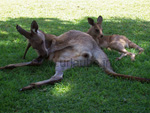
The national animal of Australia is the kangaroo. By just arriving in Sydney, one of course does not see a kangaroo immediately, but there is also no need to drive far away from the city, then the first kangaroos are visible in the free nature. It is the most known marsupial at all, but they also appear in Tasmania, Papua New Guinea and in other islands located at the front of Australia.
The Wombats look like giant hamsters, they get a weight of a total of approximately 20-40 kilograms and have a brown fur. They only appear in Australia; Wombats are very nocturnal animals that are rather seldom seen in the nature, but one can be lucky during the daytime.
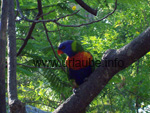
The big ratites appear in almost all areas of Australia. Only at the coast of New South Wales and in Tasmania they do not appear; After the ostrich, the emus are the second biggest ratites in earth. They measure a height between 1,60m up to 1,90m. Usually, the females are bigger than the males.
Only a sixth of all kinds of parrots existing in the nature of Australia appear worldwide. In each part of Australia, one can watch the colourful parrots. Specially the so-called lorikeets that are very trusting. If one has a piece of soaked bread in one's hand, the lorikeets will place themselves on one's arm and pick the bread from one's hand. Also the cockatoos are everywhere visible; if, for example, one walks through the botanical garden in Sydney or other places, they are already hearable from a distance and by having a short look at a tree, one sees them in swarms.
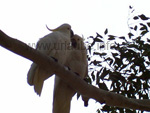
The duckbill platypus also belong to the egg-laying mammals as the echidna belongs to the monotremes. These do only appear in Australia and in New Guinea. In Australia, six of the ten worldwide most poinsoned snakes live. The inland taipan, taipan, tiger snake, brown snake, death adder and the copperhead snake belong to the most poisoned snakes of Australia. The inland taipan is considered to be the most poisoned snake worldwide. The snakes mostly appear in the outback of Australia. Due to the camouflage colours it is very dangerous to walk on the red desert sand, as due to the colour similarity, they are hard to recognize at first sight. But normaly, they just escape.
The kookaburra is the biggest kingfisher of Australia and the german name for this bird is "Laughing Hans". By having seen and heard it, the significance of the German name is immediately understandable.
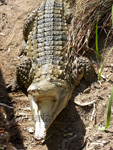
The biggest crocodiles worldwide, the so-called salties, also appear in Australia, as also the freshies. The salties ar ethe worldwide biggest existing reptiles. The salties living in Australia can get a length of up to 6 metres and are considered to be very aggressive and astute. This is why one should never bath in rivers or lakes that are not signalized, as it can result in death. As contrary to their name, the salties do not mainly appear in saltwater areas but also in embouchures. These reptiles were even seen at a 300 km distance from the coast.

Australia is also the country of the Koalas. A koala should have been seen at least once if one travels to the fifth continent. They are not only in zoos but also visible in the free nature. Most of the times, they sit right up in the top of the eucalyptus trees. Koalas do not only jump from tree to tree, but they also are on the ground. In order to get then back to their food source, the leaves, he shoves its claws in the rind and climbs up the tree.
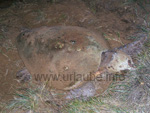
In Australia, approximately 21 different kinds of turtles live and six of them are ocean turtles. As the crocodiles, the turtles are also a remaining of long passed times. The build of a turtle did not change since more than 200 years. they are very easy to recognize due to their carapace covering their torso.
The whale shark with its length up to 15m is not only the biggest shark but also the biggest fish worldwide. Due to its extreme length, it makes the other sea dwellers look small. Despite its massive dimensions, the whale shark is harmless for the humans. It mostly nourishes from plankton and other microbes that it filters out of the water.
Dangerous Animals in the Water
If one wants to get informed about the dangerous animals in the water before doing for example a diving trip, one can get a picture in the Sydney Aquarium of the many dangerous animals. It is very interesting how many different dangerous animals live at the coast of Australia. Many of them look rather harmless but can cause some devastating pain or even death to the humans.
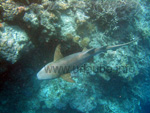
"Shark" is a good catchword for Australian waters, a thing that apparently is saved at the back of the head of each surfer. They appear in all waters around the fifth continent. For the human kind, every shark attack can lead to death. With Australia, one automatically associates the shark attacks. Statistically, in Australia more people die per year due to a struck of a coconut than by a shark atrtack. It depends on the water temperature how many sharks appear at the coast, in one year they are more and in the next year less again.
This following advices should be taken in consideration:
- Before one gets into Australian waters, no matter if it is for swimming, surfing or diving, one should make sure that there are no dangerous animals there, otherwise it is better not to bath. What is specially important is never to bath alone, no matter which kind of sports one does, cloudy waters should be avoided completely, as there are dangerous animals.
- If one takes his pet or other kind of mild animals to the journey, one should abstain from swimming with these animals.
- A boat trip to the far ocean of Australia attracts a lot of tourists every year. Those who enjoy such an excursion should urgently consider that it is not possible to simply jump from the boat into the water without any plan and without having had a proper look previously. The same also applies if one wants to jump from a pier. Also, it is to abstain from swimming close to anglers and lance anglers.
- The luke-warm nights repeatedely attract the tourists to a romantic bath at night. Pople should urgently abstain from this, as the possible dangers of the water cannot be seen as well as with daylight.
- A warning for an emerging danger is when a large quantity of fishes get collected in the water and wildly swim around; then one should rapidly leave the water. Furthermore, one should not bath in the open sea, in embouchures as also in abort edges or in the proximity of deep launders.
- If one is in the water, no matter if during swimming, surfing, diving or snorkeling, and a shark is in sight, it is urgently to recommend to leave the water quickly, but in a calmed way.
- The hapalochlaena lunulata is one of the most poisoned animals in the world. The poison can kill an adult in a few minutes. Until now there is no antitoxin, the only known treatment measures are heart massages and artificial respiration until the body has processed the poison.
- For the swimmers, the box jellyfishes are more dangerous than the sharks. The box jellyfish is a jellyfish and is considered as one of the most poisoned sea animals worldwide. It has up to three tentacles that are up to three metres long and the contained poison is enough for 200 people. Every year more people die due to the injures caused by this jellyfish then by shark attacks.
- In Australia, there is apparently no animal kind that cannot be poisoned; Even the harmless snails can contain poison. The cone shell or cone snails specially appear in shallow waters and in rockpools. Due to its beautyful shape and colours it specially attracts children.
- The so-called stonefish rather appears like s stone, as the name already implies. He has approximately 70 spikes spread all over its body. From the 70 spikes, 18 are poisoned. If after getting in touch with a stonefish one is not treated immediately, this poison can then lead to death. It mainly appears in the southern half of Australia. There, it cavorts in the coral reefs, as the name mainly says, close to the stones or right on the stones. But it also likes to sleep on the sand in the proximity of the shore.
- Most of the times, the Portuguese bluebottles are flushed to the Australian beaches by the current and the waves. They already appear in such masses that from October to March the beaches have to be barred.

Back to the index Australia
Author: Simone Palm; Copyright: Patrick Wagner, www.tourist-guide.biz
|
 |